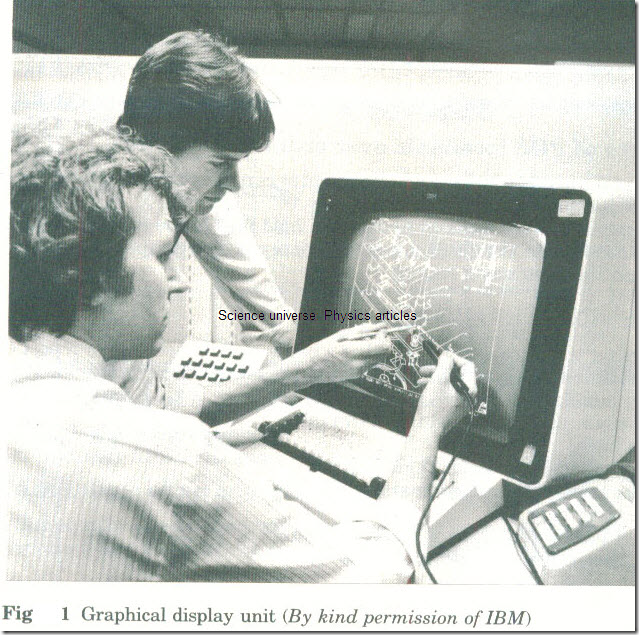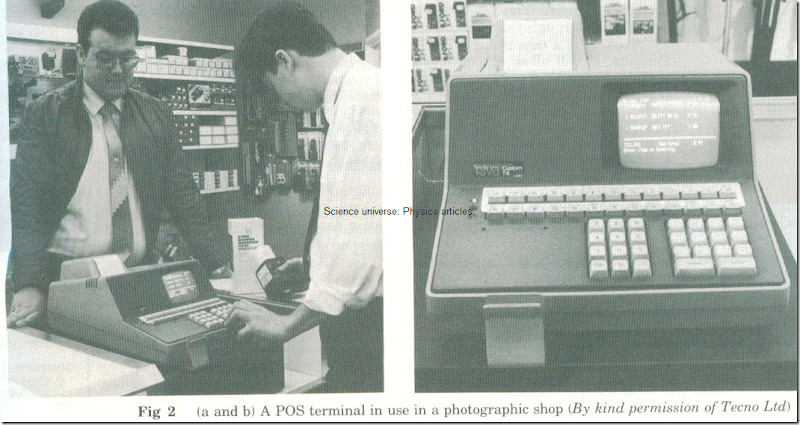Other Terminals
TELETYPEWRITER
A teletypewriter is a computer terminal which has a slow printer for output and a keyboard for input.
Disadvantages of a teletypewriter compared with a VDU
1- The teletypewriter is noisy.
2- It is usually slower than a VDU.
3- It wastes paper. Usually a VDU has a printer available. This is used only when necessary. A teletypewriter prints all the time.
4- There are limited facilities for editing locally.
Situations in which teletypewriters are used
As an interactive terminal in situations where hard copy is needed and cannot be obtained otherwise.
Note: In recent years VDUs have improved so much that teletypewriters are now seldom used.
Graphical display unit (By kind permission of IBM)
GRAPHICAL DISPLAY UNIT (GDU)
A graphical display unit is a visual display unit which can produce graphs and pictures on its screen as well as text (Fig1).
For input it usually has, as well as the usual alphanumeric keyboard:
1- A graphics function keyboard.
2- A light pen (or possibly a graphic tablet or a mouse ).
POINT-OF-SALE (POS) TERMINAL
A point of sale is a place, usually in a shop, where a customer pays for goods or services-e.g. the checkout in a supermarket.
A point-of-sale terminal is a device at a point of sale which records details of sales for computer processing.
Fig 2 (a and b) A POS terminal in use in a photographic shop (By kind permission of Tecno Ltd)
Examples of POS terminals
1- A terminal at a supermarket checkout, with a laser scanner to read bar codes .
2- A terminal which looks like an electronic cash till but is in fact connected. to a computer. The assistant keys in code numbers for the goods sold. The computer supplies the price of the goods and the name, which is then printed on the customer’s receipt (see Fig. 2 and 1).
Advantages of POS terminals over ordinary cash tills
1- The terminal records what is sold. A computer can use this data to work out how much stock is left and order more goods.
2- If the terminal is on-line the computer can hold files of the names of goods and their prices. Only a code number for the goods needs to be entered. The computer provides the name and the price to go on the customer’s receipt.
CASH ISSUING TERMINALS
A cash issuing terminal is a terminal at a bank, building society or a post office which can be used by customers. Most of the major banks have their own names for these including ‘cash point’ or ‘autobank’.
Customers can use a cash issuing terminal:
1- To obtain cash.
2- To obtain information about their accounts.
To use the terminal the customer:
1- Inserts a bank card.
2- Types in a password, which is usually a number.
3- Makes a choice of which service to use.
Advantages of cash issuing terminals
1- Cash or information can be obtained at any time of day or night.
2- There is no need to queue in the bank.
3- Transactions are done without any paper work.


